Gustard X26 PRO DAC Review
Video review: https://youtu.be/u23k6pg8JrA
Written one: https://soundnews.net/sources/dacs/gustard-x26-pro-dac-review/
The most secretive and mysterious DAC manufacturer from China is surely Gustard. They aren’t amazing when it comes to web design, they aren’t that great when it comes to marketing, they still struggle putting their drivers online, they aren’t very talkative in a language other than Chinese…but they surely know what they are doing when it comes to digital audio. I still remember the shock-wave when I’ve popped the hood of their A22 DAC, as I’ve never seen two toroidal transformers, two DAC chips in a dual-mono configuration and a fully discrete class-A output stage in a DAC that costs a little over $1000. It seems that all their expenses are going into R&D, with very little left for anything else…In just a few years, they were able to release several DACs that are putting a bigger accent on their final output stage compared to any other DAC manufacturer from China. I’m pretty sure their vast experience in building amplifiers was put to good use in their digital-to-analog converters. As of right now they fully covered the mid-level and upper-level market with plenty of converters powered by AKM or ESS Sabre chipsets. They even built two high-performance OCXO clock-generators – a clear sign that digital audio isn’t unknown territory anymore. Today I will be testing their best shot at high-end, their best converter that again left my jaw on the floor when I had peek inside. X26 PRO DAC is the pure definition of overkill in a very good way and I can’t wait to tell you more how it sounds and more importantly…why it sounds that way. This one is not targeting the mid-fi market, but the best delta-sigma modulation DACs ever made that are using commercial DAC chips. It goes for $1500 in USA and €1400 in Europe, as a statement product I won’t go easy on it and in the latest chapters of this review I will be comparing it with another flagship ESS Sabre based DAC. Be sure to check that out and until that happens, let’s unbox it and see what’s inside.
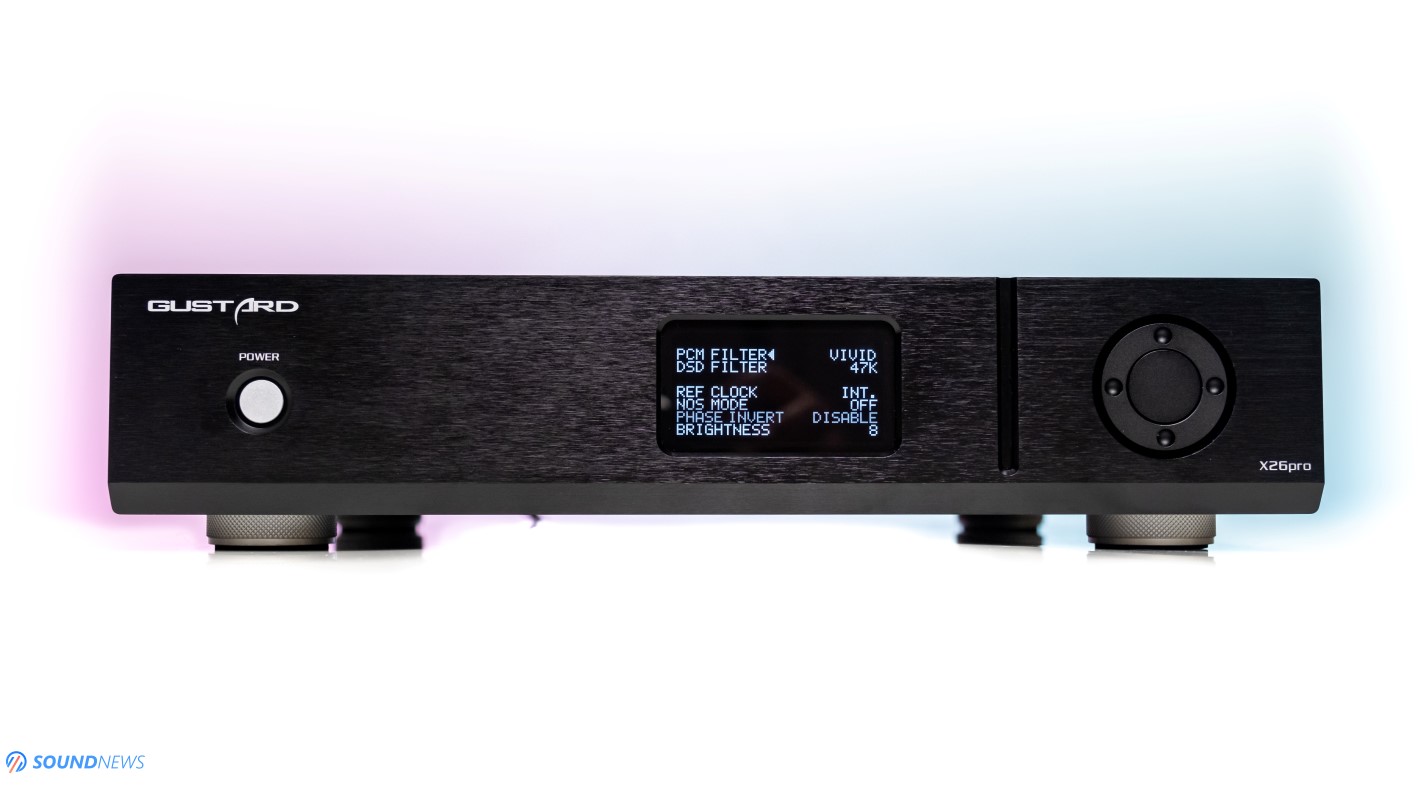
Package Contents
The big fellow came in an oversized box, it was much larger and heavier making me think that an integrated amplifier was sent my way instead of a DAC. Double boxed is already a standard procedure to ensure a safe delivery to your door. The unit itself was cuddled with foam on both sides with an accessory box put on top of it. In that box a high-quality gold-plated USB cable can be spotted, a warranty card, an after-sales card, a power cable, a bigger Bluetooth antenna to the ones I’ve spotted on SMSL and Topping units and a nicer looking remote control. It’s the same Gustard branded plastic remote, it has rubberized buttons and a nice tactile feedback.
A mini-CD is (AGAIN) found in the package which I presume hold its USB drivers. I use a desktop computer and a laptop on a daily basis, my wife uses another laptop and my kid a Surface Pro. Sadly, none of them have optical drives. Luckily, I bought an external bus-powered optical drive so I can check the contents of that Mini CD. Gustard stored USB drivers for all their units, some firmware upgrades and several user manuals for their units, except for…X26 PRO. I’m sure it’s just a mistake, X26 PRO is their freshest and newest device, most probably the ones that will hit the western market will have user manuals it in there too. There isn’t a single paper in the package, a spec sheet or some basic operation instructions, nothing like that. I would personally advise Gustard putting all those drivers and user manuals online, leaving just an URL on the warranty card, so we can easier find and download them. So far, this is my only complaint I have for this unit.
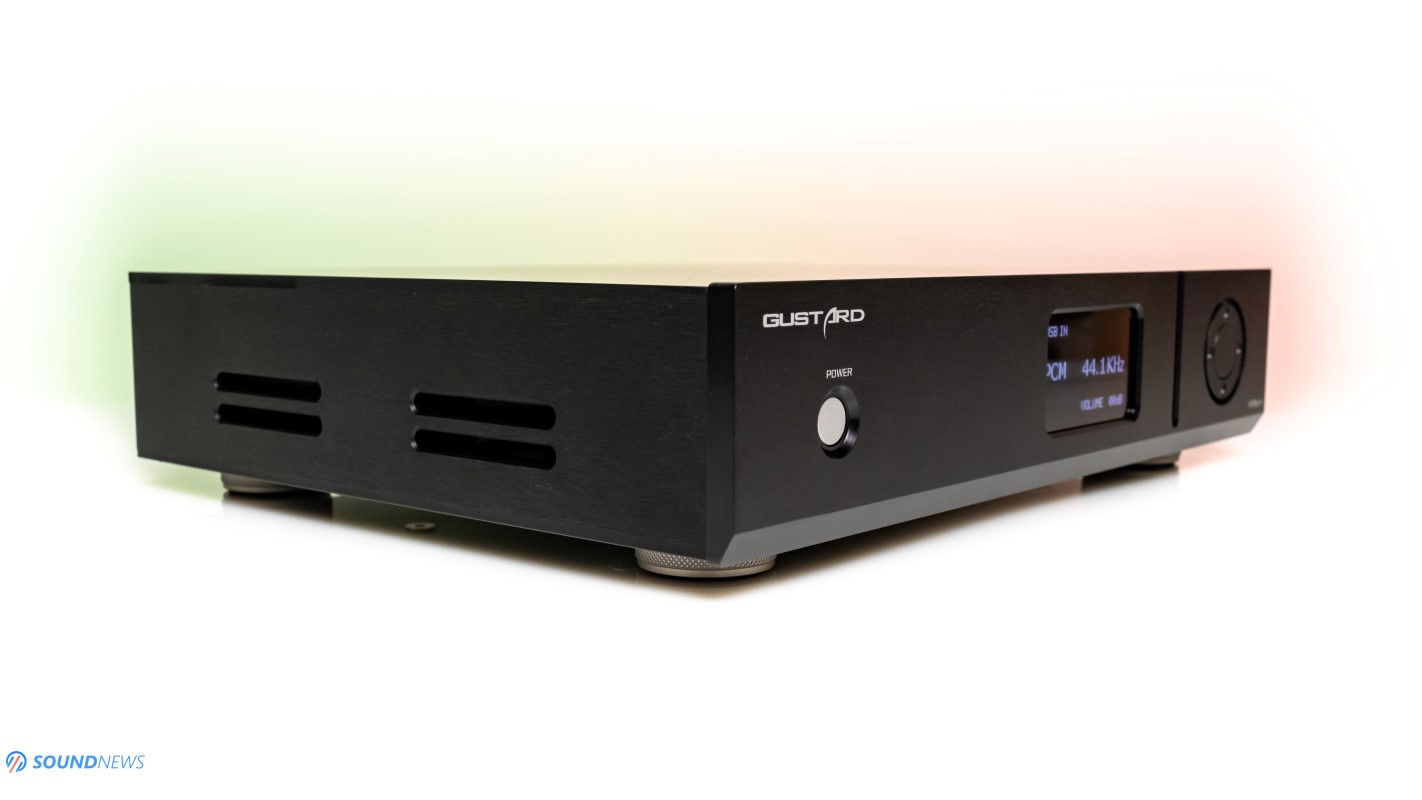
Design & Build Quality
Let me get this straight: X26 PRO weights a ton and it’s built like a tank. It uses thick aluminum plates on all sides, a thicker front and back panel to usual kilo-buck DACs. It might not win a beauty contest when it comes to DACs, but it’s still a very solid device that is built to high standards. It has pretty much the same case of their A22 DAC, that is looking like an uni-body case, crafted on a CNC machine.
All the screws were moved on its back plate and under the unit, so it would look simpler and cleaner. Its side plates have huge ventilation holes, suggesting that it has a strong output stage dissipating a lot of heat and that is a good sign already. It weights some whopping 7.5 kilos, that’s 16 fricking pounds and a half…for a simple DAC, already telling a story about its oversized power supply and its capacitance. It feels really solid, very rugged and well put together. You can choose for a silver or a black unit, both have anodized finishes for a better protection, but I do slightly prefer the back in black color scheme. Under the unit, I was impressed to see some really solid aluminum feet padded with foam to further absorb nasty micro-vibrations.
It might look raw and unpolished around the edges, but it’s not really the case (Audio-GD units are mostly like that), its corners and edges are sanded on a small scale, so it wouldn’t damage your expensive headphones while handling them around. It has a flushed On/Off button, its menu is cleverly designed, looking almost invisible in a dark environment. Its monochrome OLED screen is quite big, a bigger font was also used, so you can easily read it from afar in a loudspeaker setup. It has several brightness levels which makes it even more versatile to be used in late night listening sessions.
Besides its uninspiring and boring case design, I have really nothing else to complaint about it. I am dealing with a very serious piece of kit, that is big, imposing, heavyweight and feature packed to its teeth.
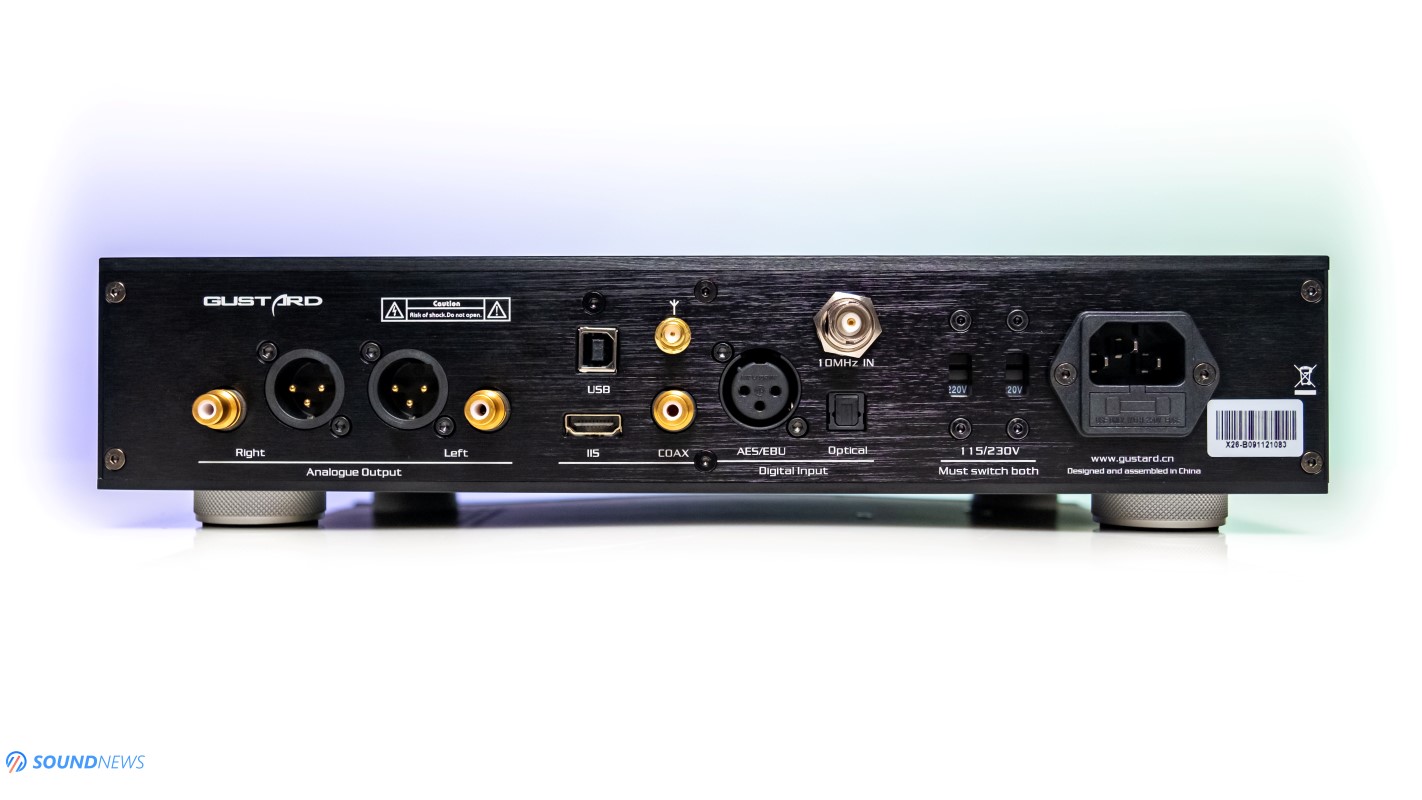
Controls & Connectivity
On its front plate you’ll find an On/Off button to the left, a big OLED screen in the middle and on the far right the outer circle will offer you 4 buttons that will let you choose a digital input and a volume level, the button in the middle is your menu button. Once its user menu is engaged, the outer circle will work as a joystick for it. The user menu can also be accessed by its remote-control, a less cumbersome way of dealing with all those settings.
On the back you can spot the widest variety of digital inputs as: USB, I2S, Coaxial, Optical, AES, a Bluetooth antenna socket and a huge surprise – a 10Mhz clock input, so you can use it with their C16 or C18 clock generators or with other external clocks if you please. The usual RCA and XLR outputs are present, those are fixed or variable, so it can be used as a preamplifier if you please. It has two voltage switches instead of one, you can select between 115 and 230 V input, those switches are connected directly to a pair of custom 50W toroidal transformers. Make sure that both are showing the correct AC voltage before powering the unit.

Menu Settings
Since there isn’t a user manual in the package, with several settings meant for advanced users, I decided explaining its menu, so you can configure it to your liking. Once you press the button on the far right or the menu button on the remote, something like this will appear on its screen:
- PCM Filter: 3 positions: Vivid, Gentle or Composite. Gustard bypassed the stock ESS filters and developed their own with the help of a hardware DSP by Analog Devices. Gentle will have a slight roll-off in the treble, Vivid will be more extended in the treble and Composite seems to work as a combination of the two. Vivid sounded the best to me, so I left it there
- DSD Filter: has 4 positions, 47K, 50K, 60K and 70K. You are selecting the cut-off frequency for DSD files. If you want a crispier sound, go for 70K and if you like a smoother top-end, go with 47K. I felt it at 47K – its default position
- Ref Clock: has 2 positions – INT (Internal) and EXT 10M (External 10 MHz). You are choosing either its internal clock - which is already a high-performance one, or an external 10 Mhz clock generator (like their C16 or C18 units). Leave it at INT
- NOS Mode: 2 positions – OFF and ON. On its OFF position, it will work as a regular oversampling DAC and on its ON position, there is no digital oversampling, acting as an old-school Non-Over-Sampling DAC (NOS). If you want a smoother top end and a warmer sound, then enable its NOS mode
- Phase Invert: 2 positions – DISABLE or ENABLE. Self-explanatory, leave it at disabled.
- Brightness: has 8 brightness positions, none of them are completely dimming its display. The lowest position (1) worked great at night though.
You have the option of making it smoother, more liquid and warmer sounding, by going with Gentle filter, 47kHz on DSD and NOS mode engaged, or you can go for the most transparent and detailed sound by going with Vivid, 70K and NOS disabled, it is really up to you to decide which sound suits you better.

Tech Inside X26 PRO
Oh my, this is where it gets interesting. I don’t think I have experienced such an overkill oversampling DAC so far. First of all, the entirety of its digital and analog sections was built in a dual mono configuration.
You’ll find two flagship ESS 9038 PRO DAC chips, those are currently the best ones made by ESS Technologies. This is the first dual 9038 PRO unit that I am testing and hopefully it wouldn’t be my last. In a high-end DAC, the quality of the master clock is very important, it’s easily the second most important thing after the DAC chip itself, as it controls the timing and the precision of the signal. X26 PRO uses a custom built high-quality femto-second clock generator which is integrated into a jitter reduction architecture. It does not require any Asynchronous Sample Rate Conversion solution to achieve this. Instead of going with an off-the-shelf, but high-quality crystal clock as Crystek and Accusilicon, Gustard designed their own Ultra-Low Noise PLL clock that is called K2. I’ve experienced custom clocks in digital audio several times already, Audiobyte HydraVox which I’m using daily has one, Aune S8 DAC has also too. Of course, the final performance of a DAC can’t be measured only by the quality of its master clock, as everything else in the digital or analog domain is very important. Considering that Gustard already developed their own 10 MHz clock generators, it is clear that they aren’t new to this scene anymore. If you want to squeeze the best X26 PRO has to offer, you can attach a C16 that uses a higher performance Oven Controlled Crystal Oscillator.
For the current to voltage conversion (I/V conversion stage), Gustard used only discrete components, not a single op-amp is found in its signal path. Its analog Low-Pass Filter (LPF) also uses only fully discrete components biased into Class-A. Again, no cheap op-amps are found in its signal path. This is a crucial part of any DAC, this is the reason it uses two toroidal transformers and this is why it dissipates so much heat.
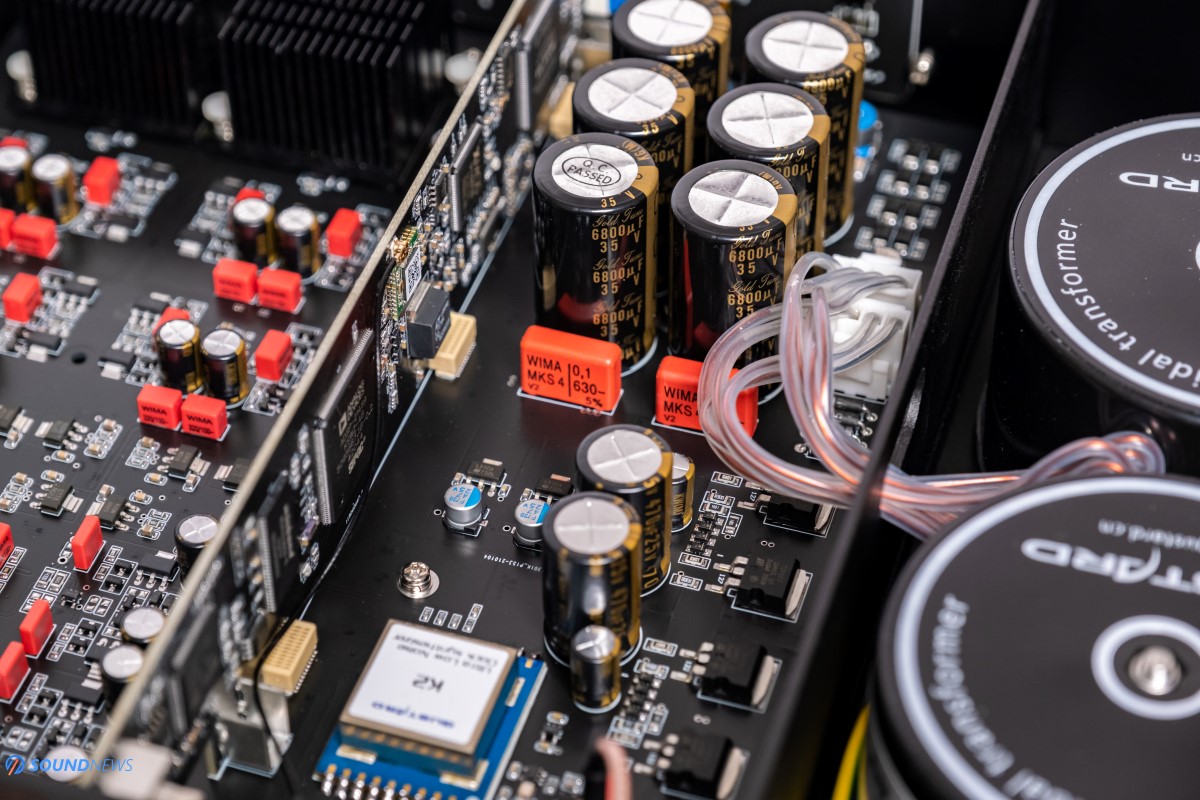
Gustard went also overkill with its digital input board, besides the ARM processor, they even added a Flash memory that works a buffer memory so that timing errors or jitter coming from your source shouldn’t be an issue anymore. You’ll find the best XMOS receiver (XU-216), the best Bluetooth receiver there is (Qualcomm CSR 8675) that supports all the nicest codecs as AptX, AptX-HD, AptX-LL and LDAC. An Altera MAX II FPGA infused with their own code will be doing PLL shaping, clock management, DOP modulation, so on and so forth. Its 3 digital filters (Vivid, Gentle and Composite) were developed on a DSP chip by Analog Devices, it bypasses the stock ESS filters with much simpler ones of Gustard. If you are into streaming services and MQA is important to you, X26 PRO has a full decoder inside that will fully unfold MQA files before playing them back natively.
It is important to know that its digital section is powered by a 50W linear, regulated and encapsulated toroidal transformer and they put another one for its analog section.
Gustard went overkill everywhere inside, including its capacitance is much higher than needed. I mean even several amplifiers are not using such a big capacitance for power filtering and storing. I’m spotting only Nichicon KG capacitors, those are currently the best Nichicon is making, also called as Gold Tone for their excellent performance characteristics.
As you can see, Gustard used only the best components, they completely ditched op-amps, they went overkill with the digital and analog boards, everything is dialed up to eleven. Honestly, even my own $3000 DAC, doesn’t have such cool components inside. Frankly, I’m expecting it to sound as the best ESS-Sabre DAC I’ve listened to this day…Let’s see if that is really the case.
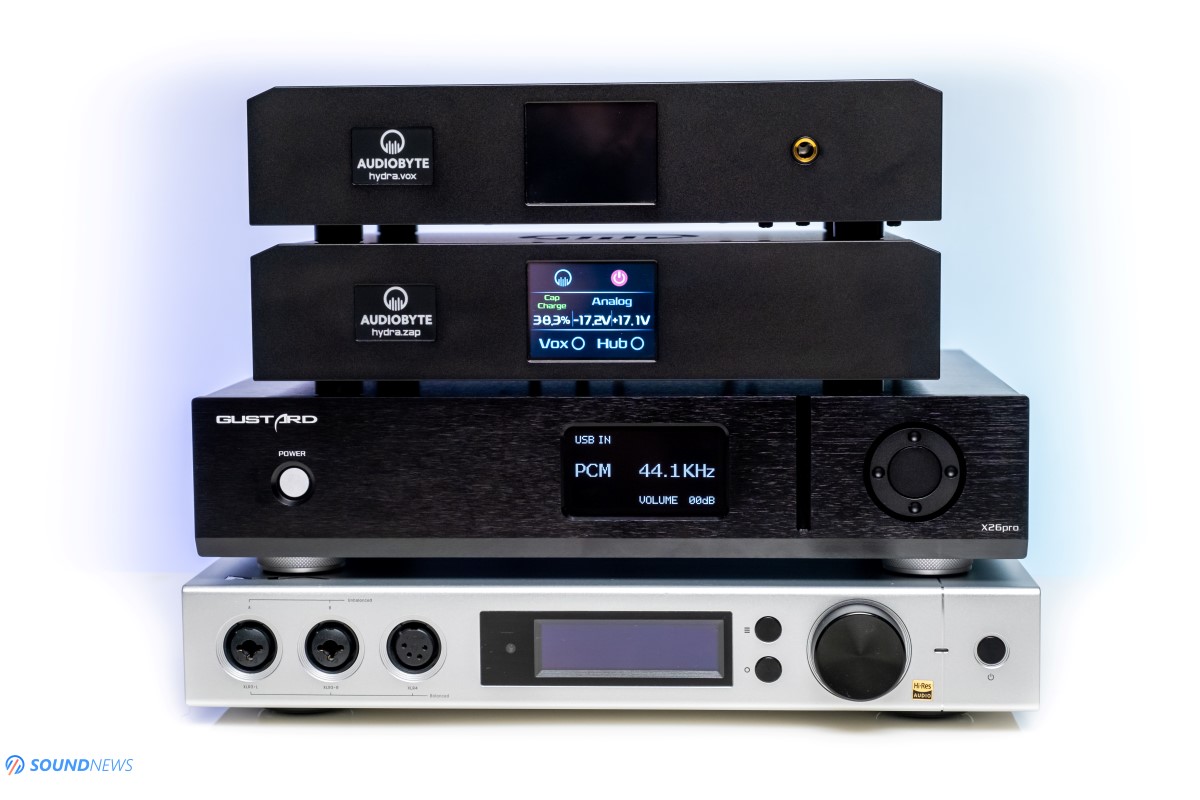
Test Equipment
I tested it in a high-end loudspeaker setup and also in several headphone setups. When I used it in the living room, I’ve tried it as a DAC + Pre unit and then only as a DAC, leaving the preamp duties to the Topping Pre90 or to a Benchmark HPA4. I’ve used a Keces S300 power amplifier, that was driving a pair of KEF Reference 3.
In the headphone setup, it was mostly connected to the Benchmark HPA4 driving several high-end planar-magnetic headphones and a bunch of dynamic headphones. Okay folks, enough with the talk, my ears are itching for some music, so let’s hit some ear-drums!

Sound Performance
I. Preliminary Sound impressions
At this size, weight and capacitance, it was clear that at least several days of burn-in are needed before I can take it seriously for a long listening session. While I was writing and filming my Musician Andromeda review, the X26 PRO was connected to a balanced headphone amplifier, so that its entire circuit would be used. One week passed, I calmed my spirits and I sat down for a long listening session.
Effortless, gentle in the treble, super powerful down low, dense and muscular in the midrange, fully preserving the naturalness of string instruments and the pitch of the human voices were my first impressions. I know only a single ESS-Sabre based DAC that had the same qualities, it’s the one that stood the test of time at my side for two years now. X26 PRO walks the same path…it doesn’t follow the rules, it’s rebel at heart. With a chipset like that, it will be called names for the rest of its life as bright, harsh, having the ESS glare, lacking emotions and midrange density. Let me tell you directly that it isn’t anything like that. It is transparency in its truest form and shape, its detail retrieval incarnate, it is also natural sounding, heavyweight in its midrange delivery, punchy in the bass, it has just the right tone to put you into your musical nirvana, it was bold and inspiring for me and frankly I didn’t expect my rock and jazz collections sounding so electrifying, so alive and ass whooping as it did on X26 PRO. I will never hail things that don’t deserve it and while I can talk dirty about its uninspired case, its mediocre web-page and shoddy translation, but it rocks really hard when it comes to simple things as playing back your music collection.
At this moment I’m smiling and toe tapping with goose bumps all over my body. Is this the (IN)famous ESS glare? Does it lack emotions? I don’t think so. I am again reminded that DAC chips are telling just a small portion of a much bigger story. Yes, my fellow music lovers, X26 PRO isn’t sounding at all like regular ESS-Sabre DACs, it is something else entirely and it’s worth my full attention.
Please let me put down the weight I am carrying on my shoulders for a few days now, telling you directly that this is one of the best sounding delta-sigma pulse modulation DACs I’ve heard at my place. Easily at the same level with my own $3000 Matrix Audio Element X, easily surpassing the performance on their A22 DAC, of Benchmark DAC3, of Mytek Brooklyn DAC+, of Aune S8, of Topping D90 MQA, of Burson Conductor 3, of Soncoz SGD1, of pretty much any delta-sigma DAC based on any commercial DAC chip I’ve heard up to this point. The hype is real, music can’t lie and the hair raising on my spine and hands can’t lie either.
The biggest surprise was its warmer tonality, it packs muscle mass in the midrange, opposed to popular belief that ESS-Sabre unit cannot form a denser midrange. The amount of bass slam coming out of this thing rivals the hardest slamming DACs I’ve heard up to this point, it reminds me very much about the Audio-GD R7 (2020 Edition) that was Thor incarnate, slamming and punching in the bass like no other DAC did.
I cannot put a finger on anything that bothers me really with this unit, the soul of the music is here, it created emotions that only R2R units could easily unearth from my music, it has the soundstage of serious AKM designs, it has their flow, while retaining the best virtues of ESS-Sabre designs like detail retrieval, transparency, cleanness, speed and thunder like impact. Can I really complaint about anything wrong in this unit? I probably can’t.

II. Transient Response
I’ll go directly to my personal favorite chapter. From tens of digital sources that I’ve tried, the ones that went the fastest were surely oversampling DACs with delta-sigma modulators and from this limited crowd, well-designed ESS-Sabre units were the most impressive devices not only when it came to speed, but also when it came to moving larger quantities of air, delivering a nicer low-end delivery, in simple words: a much better bass slam. I like my music extended from the bottom to the upper treble peaks and I’m less impressed when roll-off makes an appearance in my tunes. This is still one of the reasons Element X stood by my side for a long period, because I find it immaculate when it comes to bass performance and everything that has to do with it, like its speed and subsequently, impact.
When I fired Invisible Sun by The Prodigy (Qobuz / Tidal), I was shocked by the amount of low-end slowly crawling into my ears. Those 20 Hz notes were delightful to hear and feel with my entire body. Need Some1 by the same gang, made my earlobes flap like butterfly wings in the air. The amount of bass slam coming out of this thing was mind-blowing. The quality and the quantity of the bass was at the highest level I’ve experienced. I couldn’t get enough of it; it was too much at times and yet it was calling for more electronic music to be added to my playlist. I then went with the fastest tunes and with the wildest playlist filled with ’90-ties and newer electronica just to find it impressive. It was going extremely fast, it sounded engaging and hard hitting all the time.
Hanna’s Theme (Vocal Version) by Chemical Brothers (Qobuz / Tidal) was another delight that I wouldn’t forget very soon. While the movie Hanna was just alright, its soundtrack was exemplary by one of the most influential bands of my youth. The track was eerie, smooth and yet so highly engaging, filled with lots of air, drum hits and cymbals coming from the background. Those digitized voices carried more air to what I am usually experiencing on common DACs, everything felt bigger in size, wilder and considerably more engaging.
No matter the song, it would fully preserve the transient response, never I doubted its ability to strike fast and hard. I head-banged, I toe tapped, I slept, I woke up the next morning and repeated the same routine. What more I can say…it pushes those sounds instantly, it kicks really hard and sounds considerably livelier to most delta-sigma DACs.
What was quite amazing is that several amplifiers that aren’t known to be impressive when it comes to bass delivery and speed, X26 PRO awoke them from their deep sleep, giving a huge helping hand and the same can be said about mellow sounding headphones and loudspeakers. The best of Gustard with its overkill capacitance would infuse more positive vibes, more uplifting beats, that would cure even slow and boring setups. If you really need more slam, more body and a faster pace…I think I found a cure for the boringness of your setup.

III. Detail Retrieval & Transparency
I am reminding you that Gustard didn’t use a single op-amp in the signal path. None is being found in its I/V conversion stage, none at its low pass filter and output stage. Everything is crafted from discrete components that are biased into Class-A. Those components aren’t limited by anything really, the power supply is oversized, capacitance is overkill, using only best components for its digital and the analog sections. Listening to Interstellar Soundtrack in 24-bit PCM (Qobuz / Tidal) strengthened my initial impression than I am limited by the music itself and by my hearing abilities, as the unit itself is capable of showing the smallest nuances in your tunes. The piano notes on Afraid of Time sounded very crisp, so much texture was felt around those notes that decayed smoothly and naturally into the background. The play behind Hans Zimmer orchestra is nothing short of spectacular in terms of scale and detail retrieval. The ticks and tocks were so easy to spot, those weren’t small nuances or micro-details anymore, those became way too obvious, way too easy to pick-up and focus my attention onto.
X26 PRO will easily show everything that is hidden in the shadows, without going to the clinical or dry side. It would still be impressively clean, yet organic and real sounding all the time. Even the air in such orchestral work is filled with substance, you just feel it in your gut that the air is heavier and harder to breathe. There are more sounds hovering around and nothing can really hide from its gaze. I’m pretty shocked by the amount of detail coming out of this thing. Their A18, X16, but especially their A22 were impressive in this department, but X26 PRO is on another level altogether.
Songs in the Night by Samantha Crain (Qobuz / Tidal) was recorded by an $5000 omni-directional microphone (Grado HMP-1) that added a huge doze of naturalness into the mix. This album just flows downstream into your eardrums, it sounds organic and very textured. Samantha’s voice is sweet as nectar, acoustic guitars are vibrating naturally, vanishing slowly and gradually from the picture. While this is not one of the cleanest and transparent records I’ve tried of late, it just steals me every single time I am listening to it. X26 Pro was able to extract the smallest details, while fully preserving an organic and life-like nature of this record.

IV. Soundstage & Depth
Generally speaking, when people are asking for an airy and holographic performance that can trick your brain in believing that stereo records transformed into some sort of binaural 3D audio trickery, then I would usually recommend big and heavy R2R units, or double AKM designs for smaller pockets. I would probably never recommend an ESS-Sabre based unit for that matter, but that is going to change today with the X26 Pro.
If you check ESS 9038 PRO datasheet (click for download) you can see that dynamic range can rise up to 140 dB if those chips are working in mono-mode, exactly how they are doing in X26 Pro. It’s not a secret to anyone that channel crosstalk and capacitance have a huge influence on the soundstaging capabilities of a DAC. X26 PRO has a bigger capacitance than usual and a channel crosstalk of -140 dB on its balanced output. Gustard is not specifying its channel crosstalk of its RCA outputs, but I can only guess it stays at around -130dB or slightly worse than that.
I wasn’t surprised anymore being enveloped with sounds all around me, hitting my body from weird angles, even from a higher altitude which isn’t happening that often. Live records had an abundance of air around the notes and I felt like the centerpiece of that music. When I moved to headphone listening, using several high-end open-back planar-magnetic headphones, I felt having more air, more depth, a taller stage, with the action happening a few meters away from me. The sounds went way past my shoulder level, hovering somewhere around me. Picking notes from thin air became so easy, it wasn’t a slightest challenge anymore. Oh Me and Lake Of Fire by Nirvana (MTV Unplugged in New York) (Qobuz / Tidal) is not a spectacular record in terms of technicalities, but I was always impressed by the note placement in that studio and by the play of the notes jumping up and down, to my left and to my right. I could literally feel the room and its size, the slower decay of the notes was suggesting a larger scale and indeed this record sounded massive, super smooth and effortless from beginning until the end. I was fascinated that it enhanced the perception of air in my room, making it thicker and heavier, the notes weren’t losing impact and viscerality. I heard those exactly as impactful and hard hitting, it felt like eating the cake and then having some pudding later on. Yum!
If the scale of the music is important to you, being immersed in your music, having a very good placement of all the notes around you, then I just described one of the most impressive delta-sigma DACs I’ve tried of late.
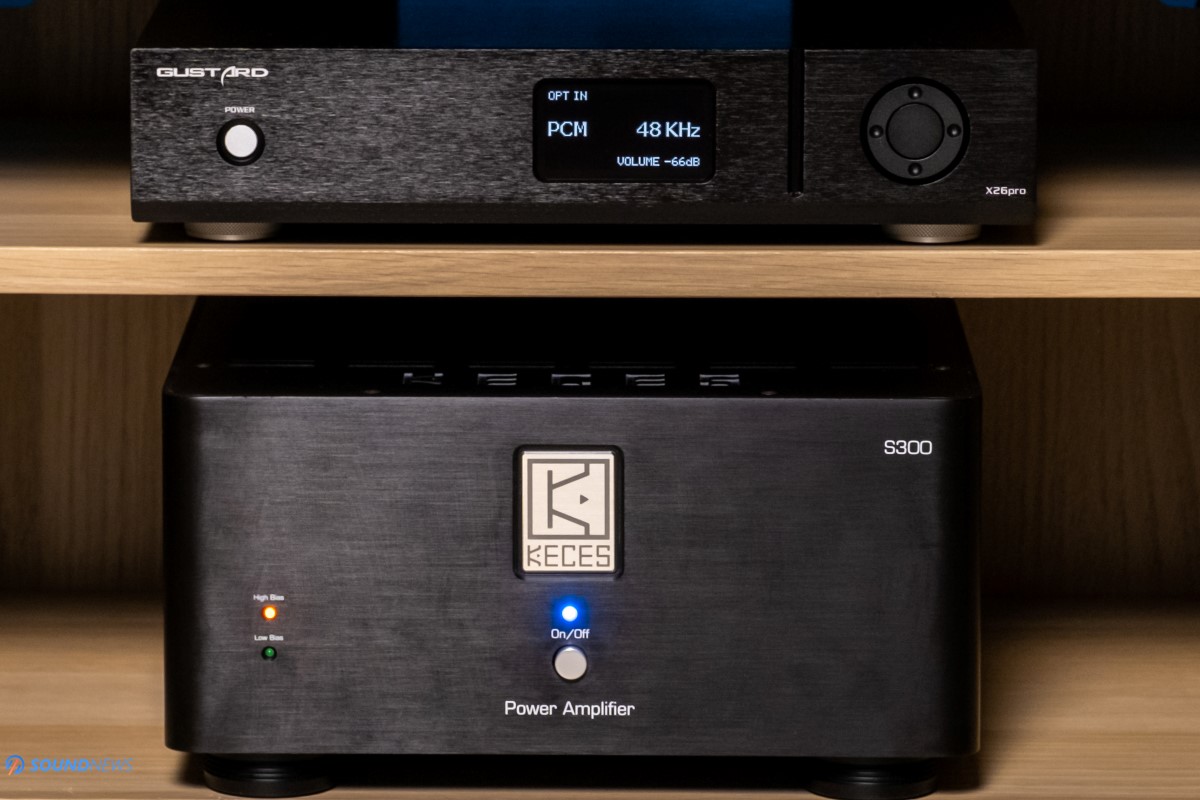
V. Noise Floor
This will be a much shorter chapter as pretty much all the newest generation of DACs are already very impressive when it comes to repelling mains noise or any other type of noise. I’ve added a Benchmark HPA4 into the chain, which is known to be noiseless with anything I’ve thrown at it, including ultra-sensitive IEMs. Connecting the X26 PRO to a passive power conditioner didn’t change its noise-floor as I couldn’t spot it in any configuration with a pair of IEMs. Putting it in my loudspeaker setup, adding the HPA4 and then a KECES S300 power amplifier, again didn’t add any grayness or hiss into the mix. KEF’s UNI-Q drivers were absolutely dead silent even after approaching them closely. Considering the extra care Gustard put in this unit, going overkill with its power supply, with voltage filtering and with the capacitance, I would be surprised hearing anything less than an immaculate performance in terms of noise floor. Adding a cell phone on top of it, didn’t add hum/hiss and all I’ve heard was a clean, undistorted sound that didn’t stay in front of the musical signal. Background was simply nowhere to be spotted, it was as black as it could possibly be, there weren’t nasty gremlins playing at higher volumes, no grain, no grayness, nothing like that and no matter if I would be using headphones or speakers, I knew that I can rely on its clean and noiseless performance.

VI. Using X26 PRO in a loudspeaker setup
There is a new trend going on and it all started with none other than Gustard. They were the first ones to slightly increase the voltage output of their DACs from the industry standard 4V to a higher value. Their A18 and A22 DACs raised it to 6V and the newest X26 PRO raised it to 5V on XLR and 2.5V on its RCA output. The output impedance stays rock solid at 100 Ohms on both outputs, making it a very good preamp to be used with a power amplifier. The slight increase of its voltage is having a beneficial outcome not only in a loudspeaker setup, but also in your headphone setup, since the amplifier that follows will work less, thus slightly reducing its total harmonic distortion. There are many amplifiers that were specifically designed to be used with higher voltages, SMSL SP400 is a very good example, it will offer you a much higher power if a hotter signal is being fed to it and frankly all amplifiers will do the same. I always had a feeling that my power amplifiers like a hotter signal to the industry standard and that translated into a more enjoyable, denser and heavier sound. The final outcome was ethereal, lightweight and less engaging if 4V or less are being fed to the preamplifier. I don’t see analog relays inside it or a high-performance volume control, meaning that it can’t replace a high-end preamplifier in a well-thought speaker setup, but it will easily replace one if you are using some powered monitors or a mid-range loudspeaker setup.
It worked very well when I used it as a DAC + Pre in my setup, Reference 3 sounded as I know them to be, their transparent and speedy presentation remained intact. X26 PRO added some class-A warmth, a heavier and more impactful bass at the cost of being less grippy sounding to the Element X. When X26 PRO worked as a DAC only, leaving the preamp duties to a Benchmark HPA4, the sound became even more focused, more controlled and tighter in a way. The difference was quite minor and I feel that in a less revealing setup, you’ll be guessing if you need a dedicated preamp or not.
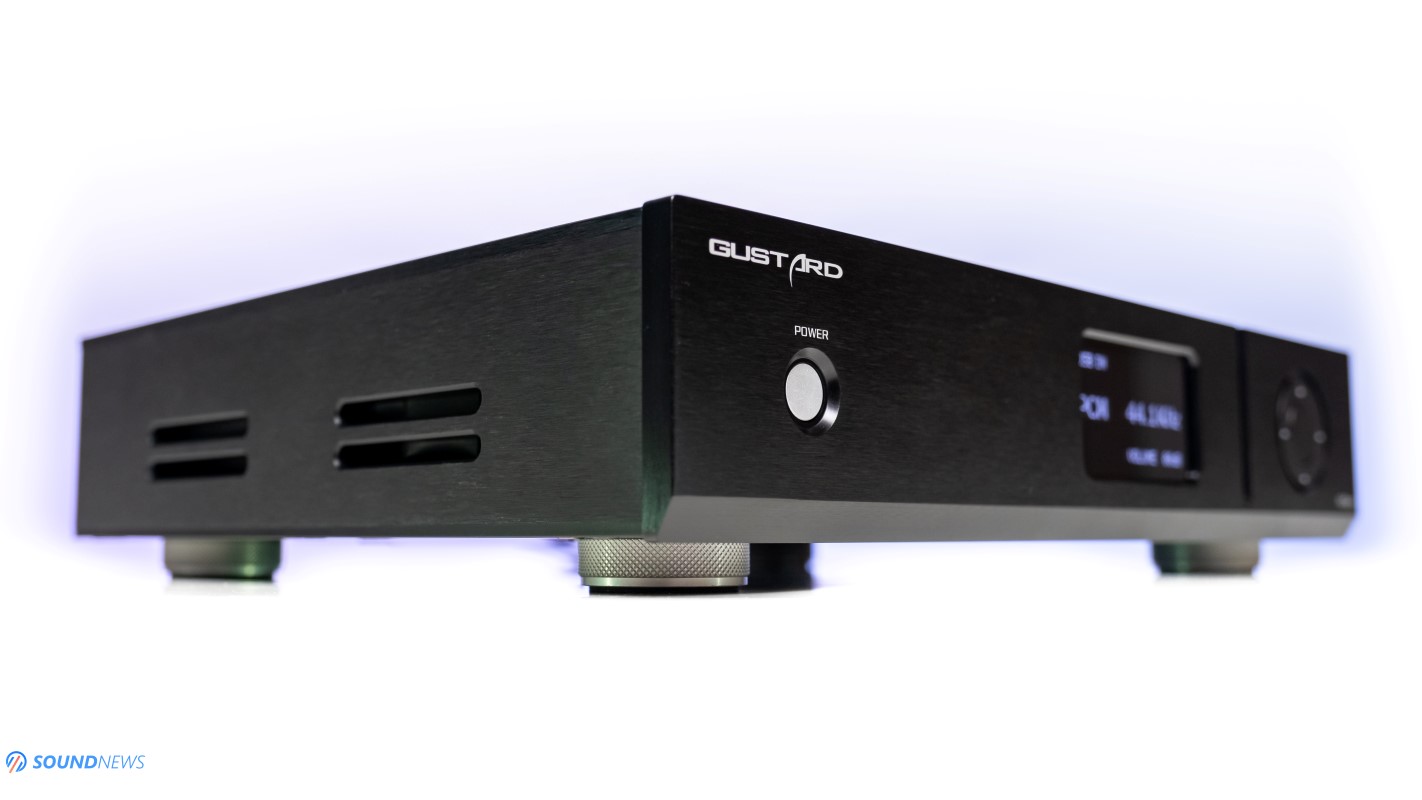
VII. Frequency Response
For this chapter alone, I moved back to high-end headphone listening that are capable of going to the deepest pits of sub-bass and to the highest peaks of the upper treble. While KEF Reference 3 are extremely good in here, Hifiman Susvara, Audeze LCD-4 and Kennerton Wodan are simply better. Room acoustics are playing a key role in here too, so obviously open-back headphones were my weapons of choice.
I’ll tell you right away that X26 PRO is immaculate when it comes to sub and mid-bass delivery. It is absolutely bonkers the way it sounds with electronic and bass intensive music. It pounded hard, it went down to the lowest octaves, it easily sustained longer bass notes. It was effortless down low, clean, super layered and extremely detailed at the same time. If you care not only for the quantity, but also for the quality of the bass, I don’t think I’ve experienced anything better at less than $3k. Mid-bass is exactly as powerful, hard slamming, fast and impactful all the time. The Class-A easiness and flow is all over in this region. It can’t get any better than this in terms of bass technicalities. It might feel like an elevated bass performance at first, but that is not really the case, this is how bigger capacitance and proper Class-A is sounding. $3000 Matrix Element X sounds pretty much the same and the $4000 Audiobyte HydraVox is also very potent and ballsy sounding in this region.
Despite popular belief, X26 Pro is very impressive in the midrange as well. It doesn’t sound at all like regular ESS-Sabre units that have a somewhat linear/neutral approach to their midrange. X26 PRO was never thin, never lifeless and boring, on the contrary it sounded fuller, much denser in here and I would never guess that two ESS Sabre chips are doing all the heavy work. I guess that its Class-A working principle and the absence of op-amps made the sound more liquid, more life like and much closer to the real thing. I was getting the chills when Leonard Cohen was singing and goose bumps on female sopranos. It fully preserved the pitch of the human voice, the vibration of strings, the heaviness and texture of piano. I can’t really find the needle in the haystack even when it comes to midrange, it is just immaculate in here.
Treble is the standard ESS Sabre affair, without the usual glare and brightness associated with this chipset. It goes sky high, there are as many details as you please, it just breathes in the treble. You will not find nasty pre or post-ringing in the treble. Its timing its perfect and it never appeared as harsh or bright sounding to me. The interesting part is that X26 PRO was always connected to a Benchmark HPA4 that is straight as a line and doesn’t awake as many emotions, it can even transform several sources into bright ones, but that never happened, even for a micro-second with the Gustard unit. I’m glad to tell you that it pairs very well with lean and linear setups, you can easily use it bright setups too. It worked with warm sounding setups, I personally used several Class-A amplifiers and it worked great with all of them. Keep in mind that you can also alter its voicing a little bit, by the help of its digital filters and NOS modes.

VIII. Bluetooth Performance & MQA Experience
Two things are needed to be mentioned first: 1) It uses the best Bluetooth chipset of the moment, that supports all the nicest Bluetooth codecs, plus it is Bluetooth 5.0 enabled. 2) It uses a longer than usual Bluetooth antenna to the ones I’ve seen in a DAC, my PC uses the same type of wireless booster for Wi-Fi connection, so I know very well its coverage. Without too much fanfare, I’ll just tell you that it has a rock-solid Bluetooth performance, 3 concrete walls didn’t pose a problem for it, even from a substantial distance. 12 meters away and the signal was still going strong and only I moved to the balcony, with 4 concrete walls in between and 15 meters away, it started stuttering, losing some beats here and there. In an open space, I’ve tried as hard as I could, but I never lost its signal. Topping and SMSL already had a rock-solid Bluetooth performance, but X26 PRO is performing just by a hair better, since it uses a better antenna, that works as a signal booster.
Sending music from a smartphone that was using streaming services as Qobuz and Tidal worked as a charm and LDAC codec sounded almost indistinguishable to its wired connections. Bottom line is that X26 PRO performed amazingly well in here, rising the bar yet again and becoming a new benchmark when it comes to Bluetooth receivers.
IX. Comparisons
Okay folks, it is time to have a proper showdown between the best oversampling delta-sigma DACs I’ve tried so far. To my right sits the undefeated champion for 2 years in a row, wearing silver shorts, please give a round of applause for Matrix Audio Element X! To my left sits a fresh and young contender, wearing black shorts and smelling bad attitude from a mile away, give a round of applause for Gustard X26 PRO! Ladies and Gentlemen, let’s get ready to Ruuuuumble!

Gustard X26 PRO ($1500) VS Matrix Audio Element X ($3000)
In terms of build quality, both are carved on CNC machines with very tight tolerance numbers, they both look and feel like expensive units. Although in terms of looks, I’ll give an edge to the Element X which looks nicer, more futuristic and way more elegant. Element X is one of the biggest D/S DAC I’ve tested so far and it is currently the best sounding one too, it is my reference together with the Audiobyte HydraVox. Unsurprisingly, X26 PRO is even bigger, much heavier, hotter on the outside, consuming twice as much power to the Element X, thanks to its Class-A I/V conversion, LPF and output stage.
In terms of features, Matrix put a lot more stuff inside it, hence having a much higher price point. Element X can work as a fully balanced headphone amplifier, it can work as a fully-fledged streamer via Wi-Fi, you can use it as a Roon endpoint via Wi-Fi and USB, it supports DLNA and UPnP wireless protocols. You can use it as an offline music player via its MicroSD card slot or via its double USB-host ports, to which you can connect USB flash drives, HDDs or external SSDs filled with music, playing all that via its Matrix Audio app available for iOS and Android devices. Matrix even added a true line-amplifier circuit (preamplifier), so it can output up to 15 Volts of pure analog gain via its XLR outputs. It is really my centerpiece in my loudspeaker setup, as I just need a power amplifier, a pair of speakers and I’m ready to rock. By comparison, X26 PRO can work as a DAC or DAC + Preamp combo and as an added bonus it can work as a Bluetooth receiver, which Element X cannot.
The digital and analog sections of X26 PRO as somewhat more interesting and a lot more complicated. Both units are using the same DAC chip, but Gustard put two pieces of the same silicon, instead of one. Element X uses a combination of op-amps and discrete components for its LPF and output stage, whereas X26 PRO is fully discrete from input to output and lacks any op-amps in its signal path. Matrix used a single but a better performing Noratel transformer, while Gustard used a less impressive one for its analog section and a secondary one for its digital section. Gustard developed their own crystal oscillator, presumably better performing to the one in the Element X, while Matrix used some of the best commercial clocks available on the market (Crystek CCHD-950).
Before any listening, I needed to volume match them, since X26 PRO is outputting 5V on the XLR and Element X a weaker signal of 4.5V. For that I used a MiniDSP E.A.R.S. system and a 300-Hz sine wave. E.A.R.S. detected a difference of exactly 0.7 dB at the listening level of 85 dB with the Audeze LCD-4. Before listening, I volume matched them, I’ve used the same power cables, the same interconnect and USB cables for both devices.
All my tests were done blindly with the help of my beloved that was switching the inputs on the HPA4. The most striking thing to know is that both devices are sounding almost indistinguishably. Both carry the same weight in the bass, both sounds exceptionally open and wide, both have natural decays but also lightning speed when asked for. Their tonalities are very alike, but still…there was a minor difference. X26 Pro was by a hair more organic sounding, its midrange was by a smidge fuller. Acoustic music was always grabbing my soul and that happened less often on the Element X. Gustard unit seems to have a slight advantage when it comes to midrange density. It is by a hair warmer sounding in here and that worked as magic for lean sounding setups. The tone is just bolder and the air is heavier on the X26 PRO, it just feels over-powerful and really effortless sounding with everything I throw at it. In terms of soundstage, it was a hit or miss, sometimes X26 PRO felt like bigger sounding, sometimes I had a better pin point location of all the notes with the Element X and other times I couldn’t spot a difference at all. If there is one, X26 Pro is maybe by a hair wider sounding from left to right, but only with live and well-mastered music. Reviewing DACs is a complicated process, as I am listening less and less often to my own setup and this comparison made me rediscover…my own DAC. I was excited this whole review, it indeed blown me away as X26 PRO really sounds like a high-end DAC from any point of view and it seems that my own unit sounds pretty much the same. How curious.
I’ve observed that Element X has a slight, almost unnoticeable ringing in the treble, while X26 PRO completely lacks any of that. It isn’t rolled-off or anything like that, there is it just less glare and more texture. Element X wasn’t that good, its output stage isn’t entirely made out of discrete components and that is the only explanation I can give. The music was smoother, it poured more naturally on X26 Pro and just by a hair less impressive on Element X. On the other hand, Element X had every sound under a very strict control, the contour of the notes was clearer on the Element X, like it had a clearer shape and a better micro-detail, but again, the difference was small even with high-end amplifiers, headphones and speakers.
The most important thing to know is that they sound more alike than different and I needed more than two hours to find all the smallest differences and nuances and this thought alone makes the X26 PRO an absolute steal.
In my loudspeaker setup, Element X worked by a hair better connected to a power amplifier, its dedicated line-amplifier circuit and its better volume control paid off, making my music tighter, more focused and better controlled, like I magically treated my room with invisible absorbers and diffusers. X26 PRO wasn’t that grippy, it lost some definition, contour and boldness, with it something was gently pressing the brakes. I would probably add a dedicated preamp later on if you plan on using it with a power amplifier.
It seems that as DAC only unit X26 PRO won several rounds, Element X won a few less, but most of them felt like a draw. As an outro for this comparison, I just found an upgrade path for Gustard A22 owners, for Topping D90 MQA, Aune S8, Soncoz SGD1, for all Matrix owners (except for Element X that is more or less the same), for Benchmark DAC3, Mytek Brooklyn DAC+ and SMSL M400 owners. X26 PRO performed like a true high-end DAC, brawling with the best there is, with a mid-fi price tag attached to it.
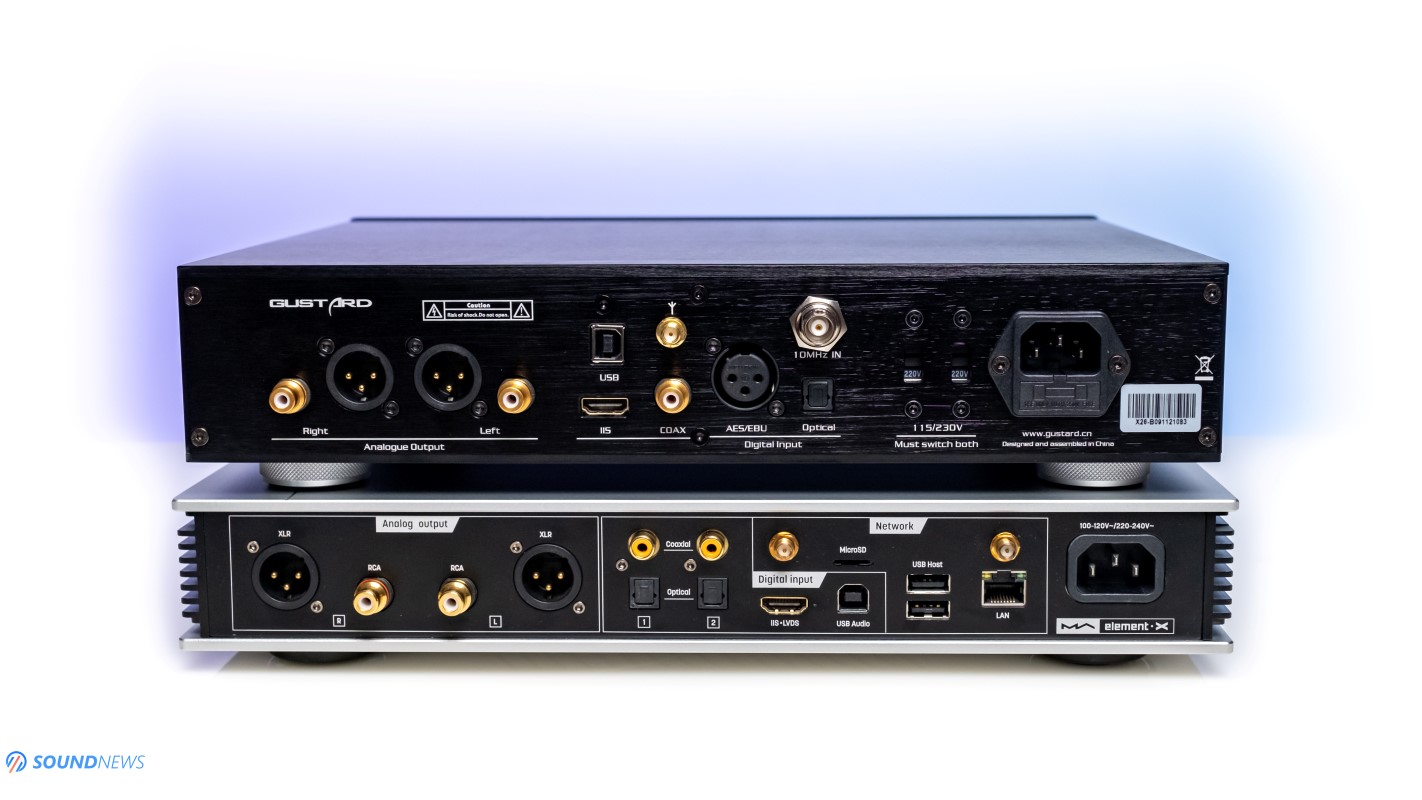
Conclusion
It should be clear by now how impressive the X26 PRO by Gustard sounded in several setups. It is not that often when you see a fully discrete output stage, a dual mono design from input to output, a custom master clock generator, some oversized toroidal transformers and best-in-class capacitors in a device that costs less than $2k. Gustard left me plenty of signs on what should I expect and it indeed delivered on all its promises. It managed to impress my deeply and it scored a top spot in my DAC rankings. It indeed performed like a flagship unit and I am looking forward to the next doings of Gustard. I wish they would release a more serious clock generator that has the same width, a wireless streamer and a dedicated preamplifier would also be nice to see in the future.
I can complain only about its case design, which looks bland and uninspiring, but everything else feels and performs at a very high level. X26 PRO just scored a Gold Award and it is fully deserved. Congratulations to the team!

Gustard X26 PRO will cost you $1499, it was kindly provided by Aoshida Audio and it can be purchased from their web-store by following this link. They are offering free world-wide shipping and full warranty support for it.
PROS:
- Rock solid device, built like a tank n’ heavy as one too
- Non-compromise component selection
- Class-A working principle, op-amps were ditched for good
- Resolution and transparency in their truest form
- Nicest bass slam I’ve experienced in a delta-sigma DAC, immaculate transient response
- Great sound-staging capabilities, rivaling even R2R units
- Holographic and 3D sounding all the time
- Much warmer and textured to regular ESS-Sabre designs
- Great midrange performance
- Exceptional tonality, sounds vivid and alive
- Fully covers the frequency response, extended at both ends
- Clean and noiseless as a preamp
- One of the best oversampling DAC I’ve tried, easily in the top 3
- Amazing value!
CONS:
- Uninspired design
- That Mini-CD should be forever gone, replaced with a download link for its drivers and manual
ASSOCIATED EQUIPMENT:
- Sources: Xiaomi Mi 9T Pro, Corsair One i160
- DACs: Gustard X26 PRO, Gustard X16, Matrix Audio Element X, Audiobyte HydraVox + HydraZap, Flux Lab Acoustics FCN-10
- Headphone Amps: Benchmark HPA4, SparkoS Labs Aries, Flux Lab Acoustics FCN-10, SMSL SP400, Burson Soloist 3X, xDuoo XA-10
- Power Amp: KECES S300
- IEMs: FiiO FD5, FA9, FH7, Meze Rai Penta, Rai Solo, LittleDot Cu KIS & many others
- Portable headphones: Sennheiser Momentum 2, Meze 99 Classics
- Full-sized headphones: Hifiman Susvara, Hifiman HE1000SE, Audeze LCD-4, Erzetich Phobos, Erzetich Mania, Kennerton Wodan, Magni, Gjallarhorn, Vali, M12S, Quad ERA-1, Ollo S4X Reference, HarmonicDyne Zeus
- Loudspeakers: KEF Reference 3
- Interconnects: QED Reference (x2), Topping TCX1 (x2)
- Speaker cables: Kimber PR8, Audioquest Type4
- Power Cables: Isotek EVO3 Premier (x3)
- Balanced Isolation Power Conditioners: PLiXiR Elite BAC400
